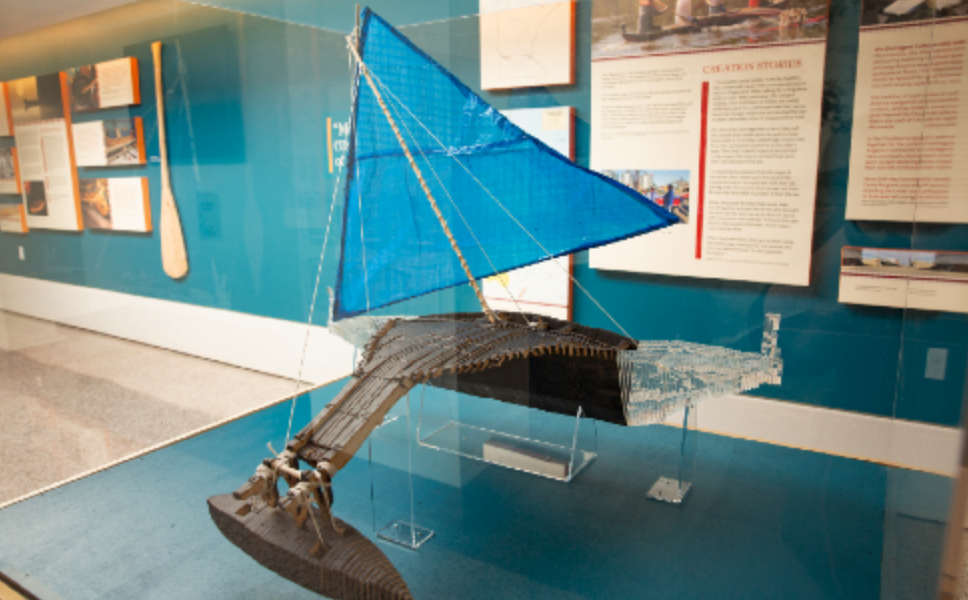This week on Minnesota Native News, White Earth works to deal with homelessness, Flanagan addressed a grieving state and a new exhibit celebrates indigenous engineering.
Lieutenant Governor Peggy Flanagan says she is grieving after the death of Daunte Wright at the hands of a white police officer in a Minneapolis suburb. Melissa Townsend tells us more.
In a radio address on April 16th, Flanagan said the killing of Wright, who is Black, is a trauma on top of the trauma of George Floyd’s death.
“I know that Daunte Wright called his mom right before he died and George Floyd called out for his mother and as a mom, I’m holding a lot of this and I know that a lot of Minnesotans are devastated,” said Flanagan
Flanagan said Minnesota’s leaders need to do something about police killing of Black and Indigenous people and People of Color.
“All Minnesotans, but especially our leaders should be deeply concerned that Minnesota is starting to developing a reputation as a place that is not a safe place for Black men or the Black community. And our top priority should be figuring out how to address that,” said Flanagan.
The New York Times recently reported that nationally – 64 people were killed by police in the 3 and a half weeks during the Derek Chauvin trial. That’s 3 people a day killed by police. Half of them were Latino or Black. There were no stats on the number of Native people killed.
In other news….
The White Earth Tribal Council is working to address the homelessness emergency on the reservation. In a resolution passed on March 19th, officials stated the White Earth Homeless Program has been assisting those without stable housing. But even with this help, tribal officials said the number of White Earth citizens without a stable place to live warranted a state of emergency.
Later that day, on March 19th, the tribal council announced they some very good news. The White Earth Band had received more than 2-million dollars from the U-S Department of Housing and Urban Development; 2 point 3 million to be exact. The money comes from the American Rescue Plan recently passed by Congress and signed by President Biden.
In a statement, White Earth tribal Chairman Michael Fairbanks says the tribal government will begin the process of deciding how the money will be used in the best interest of tribal programs and the community.
And finally …
A new exhibit on the University of Minnesota Twin Cities campus is all about canoes made by the indigenous communities in minnesota. Jacob Bernier is one of the exhibit curators.He is a Red River Metis descendent. And he’s getting his Masters degree in Heritage Studies and Public History at the U. He says he has always been interested in canoes…
“I’ve always been akin to water and my ances.tors were canoe people so it’s just kind of engrained in me,” said Bernier.
Then at the U he took a class with Professor Vince Diaz where the students take a traditional Micronesian outrigger canoe out on the Mississippi River.
“It really just kind of took my breath away. It made me feel so many different emotions all at the same time. And I’ve been wanting to do things with canoes ever since,” said Bernier.
So as part of Bernier’s Masters project he helped curate this exhibit all about canoes built by Ojibwe and Dakota people indigenous to Minnesota and the Micronesian community who settled here.
“These three communities have been pivotal in the Native canoe program at the University,” said Bernier.
The exhibit includes images and information and some small scale models of the traditional canoes — the Micronesian outrigger, the Ojibwe birch bark and the Dakota dug out canoes .
Breneir says his goal is to honor the indigenous knowledge of these communities.
“Canoe practices have been around for thousands of years and they will continue To be. As long as there are people, there will be canoes. So our goal is to make sure things continue on in a good way,” said Bernier.
The exhibit is open Monday through Friday noon to 5 pm on the 4th floor of the Northrup Auditorium. It will be there through September. But co-curator Jacob Bernier is created an online 360 tour of the exhibit so anyone can see it even if they can’t get to the U of M Twin Cities Campus.
Melissa Townsend reporting for Minnesota Native News


 Health Officials Urge Travelers To Test For COVID, Avoid Mexico Due To High Transmission Rate
Health Officials Urge Travelers To Test For COVID, Avoid Mexico Due To High Transmission Rate